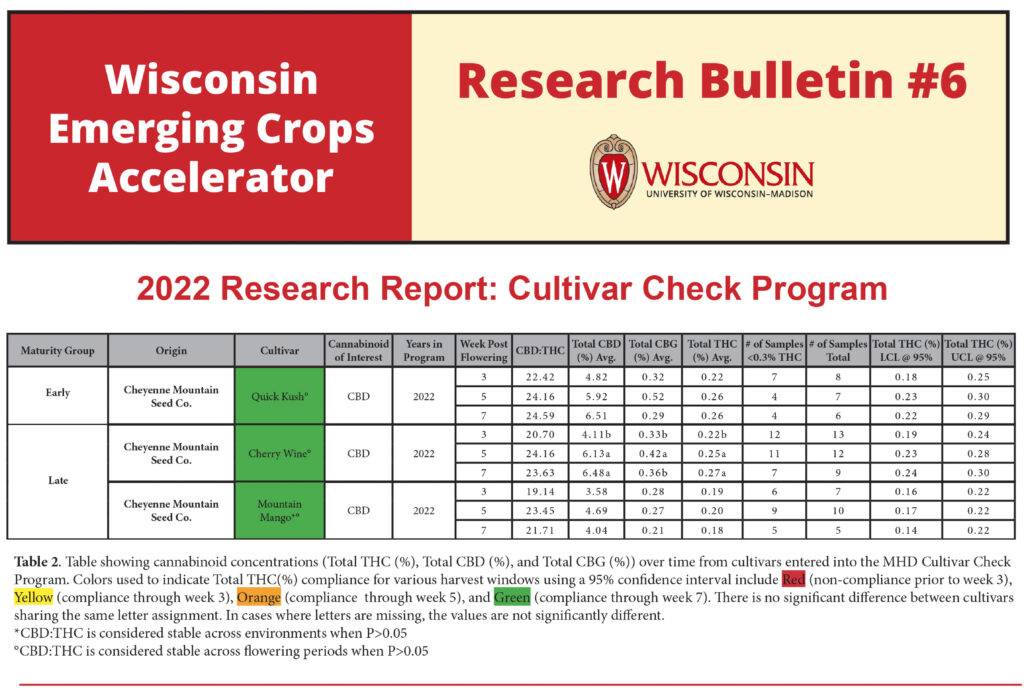More Hemp Production = Greater Body of Knowledge for All of Us
As some of you are aware, my team and I have decades of experience in cannabis cultivation, processing, and sales across a spectrum of growing conditions in multiple countries. We’ve had a front-row seat watching this industry evolve from the early medical marijuana startups to state-by-state forays into recreational marijuana sales. Since 2018, we have been active participants in the re-birth of America’s hemp agriculture. Since then, I’ve shared observations about the various directions and missteps that we’ve collectively taken as growers, processors, regulators, legislators, marketers, academics, and retailers. To say that we haven’t been on a shared and focused path would be putting it mildly. We’re all using different maps and have different destinations in mind. Confusing.

Like many, I’m convinced that all the shake-out we’ve been working through will eventually resolve. The inexperienced and the quick-buck players will be escorted out. The rest of us will find comfortable roles and profitable niches. Trustworthy, properly labeled offerings will stock the shelves and consumers will be able to confidently enjoy a wide variety of cannabis-plant products – from textiles to pain relievers. That’s my optimistic vision, anyway.
There are many influences contributing to the steady progression of the cannabis industry, most notably the mounting participation of big pharma and big retail. These behemoths are not interested in “craft” level solutions; they need consistent, reliable supplies in large quantities which means that crops need to be consistent and reliable. While there will always be a market for home-growers and boutique strains, the money is on large-scale farmers who are seeding with mass-produced, tried-and-true cultivars … just like corn growers. Consumer demand is behind all of this. Increasing desire across the US for cannabis-derived merchandise is the ultimate force driving us all toward efficiency, quality, and more volume.

What’s been lagging behind in our business is data collection. That deficiency is perfectly understandable given the relative new-ness of cannabis to the conventional marketplace. As we have moved hastily from the margins to the mainstream, profiteers with short-term vision have rushed in. Too often, speed won out over quality and as a result, subpar products have been somewhat of a feature of the commercial cannabis landscape. Farmers and growers have had to suffer through the hardships that arise when you plant low quality strains. Spindly, weak, disease-prone grows riddled with male plants yield more disappointment than fiber or CBD. The marketplace is slowly “weeding” itself of these under-performing cultivars in favor of productive, resilient strains. Year by year, we are improving our collective knowledge about seed performance. In time, that knowledge will become the foundation for seed standards. For now, our best solution is to reference ongoing field research projects.

Thought leaders like the members of the Midwestern Hemp Database are designing and conducting meaningful field tests across multiple hardiness zones. Their focus is “real world” documentation about seed performance. They are measuring in minute detail things like the pace of maturation, growing conditions, cultivation methods, testing, and harvesting. This is the kind of information we are going to need to really nail down best practices and improve the predictability of this crop. Texas hemp farmers who struggled through the epic 2022 drought would be glad to know how to prepare for and successfully pilot themselves through a similar future event. Further research and drought-tolerant strain development are imperative.
The University of Wisconsin-Madison led a large-scale field test in 2022 as part of its Wisconsin Emerging Crops Accelerator Program. Academics from Michigan State, Purdue, and the Michael Fields Agriculture Institute collaborated in publishing their findings this past winter.

In the absence of federal seed certification standards, the aim of this study was to verify the performance of various “good potential” cultivars. Tests were conducted in four hardiness zones across Michigan, Illinois, Indiana, and Wisconsin. There were 32 grower-cooperators who evaluated 20 feminized hemp strains, with an eye toward seeing which ones performed best. The study participants followed essentially the same steps in cultivation and provided weekly documentation that included photos, samples, and recorded metrics.
Cheyenne Mountain Seed Company had three strains entered in this study. Our Quick Kush, Cherry Wine, and Mountain Mango each performed well in testing regarding THC levels, hardiness, and flowering periods. It was especially gratifying to see that our strains remained below the THC compliance threshold into the seventh week after flowering, which means that our growers have notably longer harvest windows. We were honored to be identified and selected for this research and proud of the results. For my company, this is independent scientific verification of the high quality of our seed products.

This graphic only shows our Cheyenne Mountain Seed Company Strains.
Everyone in our industry should support studies like this. Whenever possible, we urge farmers and growers to participate in hemp trials conducted by academicians, scientists, and state agricultural entities. This work serves a shared purpose: to help us develop superior seeds that tolerate a wide spectrum of growing conditions across North America. Ultimately, we want to see hemp succeed as an agricultural crop. When it does, small farms and home growers will reap the benefits from future studies and science-based advances in hemp cultivation.
For now, I’m content to play my part as a cultivator and resource for top-quality feminized hemp seed … and also an informed observer of the various steps in the process that are leading us closer to my optimistic vision for our industry.


Recent Comments